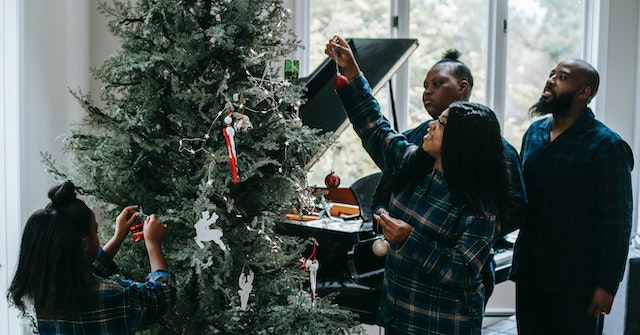It’s generally agreed that an artificial Christmas tree is simpler to set up than a real one. Even so, if you’ve never done it before, it’s not exactly a picnic in the park.
That’s because you need to do your homework before diving headfirst into all that tinsel, as not every fake tree is the same.
To begin, the quality of a man-made spruce is directly proportional to its cost, which can range from $50 to $1,000 or more.
Artificial flower and tree experts, Nearly Natural, say that with proper care, a quality fake fir can endure for up to a decade.
You’ll have to sort through different types of trees and think about the materials they’re comprised of. You don’t have to be an arborist to do this, but you should know the distinctions and pick the one that appeals to you the best.
Here are the most common pitfalls to watch out for when purchasing an artificial Christmas tree:
Failing to do research on trees before purchasing.

Is a lifelike tree your first priority? Buy a plastic one instead. Cheaper polyvinyl chloride (PVC) trees have flatter, less realistic looking branches than their polyethylene (PE) counterparts.
Some homeowners prefer a more wintery look, so they should look into flocked trees, which have branches that look like they’ve been dusted with snow. A green fir is the classic option.
And, according to Ana Cummings of the eponymous design business, the kind of tree you use for fake purposes is important. Morgan firs and pines, such as Grandview and Savannah, are among her top realistic tree choices.
You may also purchase aluminum trees in every conceivable color (pink! purple!), as well as tinsel-covered trees in case you’re feeling particularly Day-Glo.
Incorrect sizing
The obviousness of this statement is belied by the fact that some people are notoriously imprecise when using a measuring tape. Reawaken Your Brilliance’s mastermind Julie Coraccio stresses the importance of taking stock of available space before deciding on a tree’s dimensions. Also, measure the breadth of the room to make sure it’s adequate for your needs.
Miniature desktop models are the safest bet.
Also, “where are you going to temporarily keep it if you have to move furniture out of the way for the tree you’re buying?” she wonders.
Bottom-line, think things through thoroughly before bringing in that humongous box.
Darla DeMorrow, author of “Organizing Your Home with SORT and SUCCEED,” advises that you secure your fake fir tree well so that it doesn’t tip over and hurt your children or pets.
And remember to factor in any extra space needed for a riser or table if you plan on using one to display your tree.
Tabletop trees can be up to six feet tall, so measure your ceiling height to make sure you don’t go overboard.
Losing count of bulbs on pre-lit trees
The fact that artificial trees can be purchased pre-lit makes them quite appealing to many people. Who needs to juggle so many wires? Make sure there are enough bulbs on the branches before snatching up this deal.
Lowe’s lighting experts suggest at least 100 lights for every half a foot of tree height, while some people use twice as many (check the box before you buy, and add extra strands if you like a big glow).